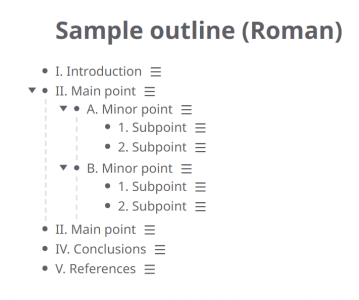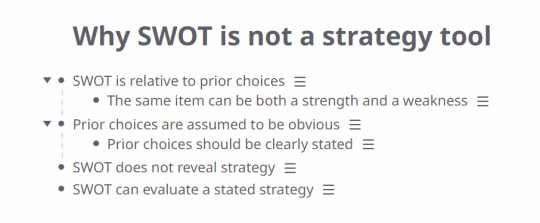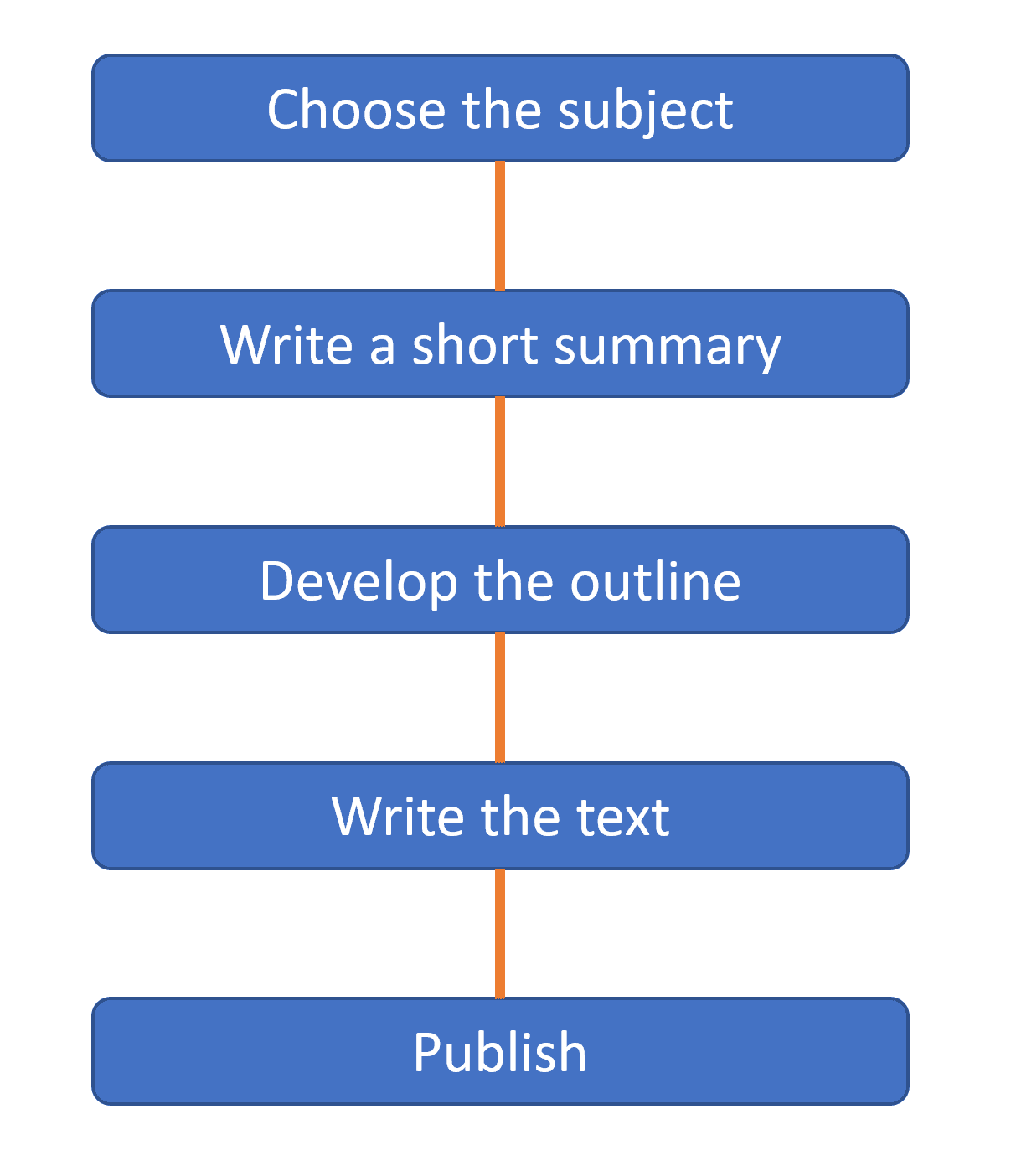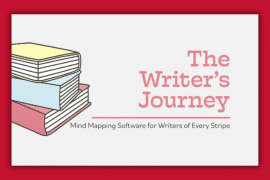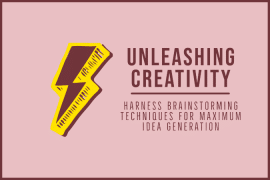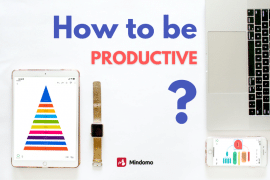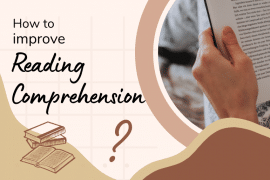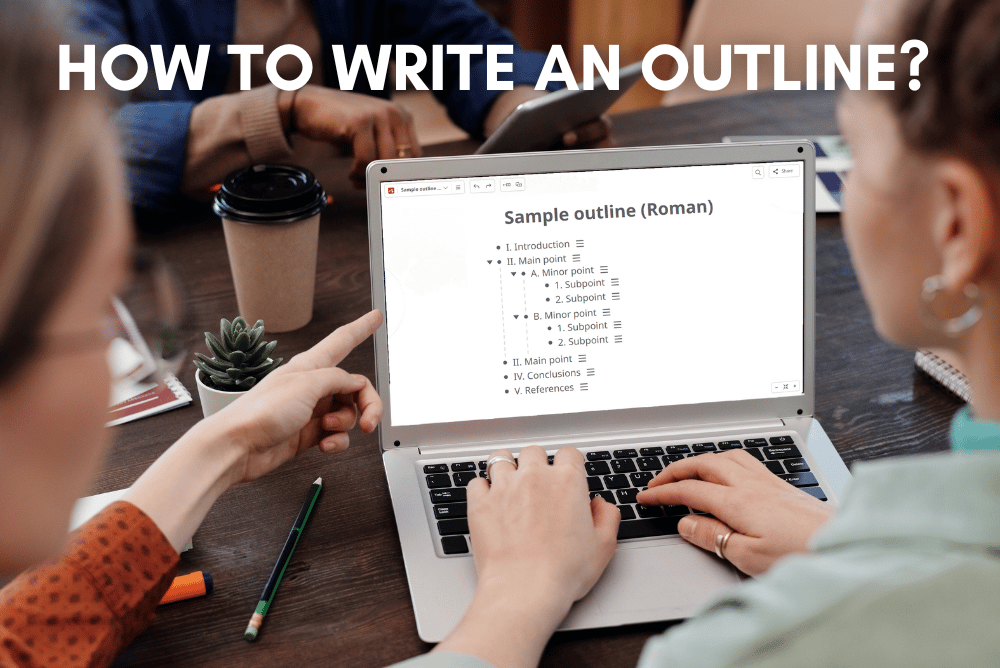
Almost all of us need to write essays, reports, documents, or a paper at some point in our studying or working lives. Writing by creating an outline is taught in schools and universities across the world. We usually assume that things taught by universities and experts are the best way. But while outlines themselves are essential, the method behind them is often unrealistic. In this article, we examine why this is and show you how to make an outline for an essay that aims higher.
What is an outline?
An outline of a document or essay is a list of headings, usually indented to show main sections and subsections. Read an introduction to outlining in our blog: What is an outline article.
The table of contents for a book is an example of an outline. From the outline, you can usually see what is included and the sequence in which arguments or knowledge are built. The sample outline below is a “topic outline”, which uses headings.
There are several different types of outlines: “Chicago Style”, APA (American Psychological Association), MLA (Modern Language Association), “topic outlines”, “full sentence”, “numeric”, and “alphanumeric” to name a few. Each has precise rules about numbering, requiring Roman numerals or Arabic numerals. Topic outlines are just subject headings. Full sentence outlines are complete sentences that make a standalone statement.
Some formats require that the points you make have equal weight. These rules make it easier to judge a piece of work against rules, not only by its content. But they also tend to focus on structure and format first and content second.
Steps on writing a document, essay, or publication
Writing does not begin with the outline. Most outlining methods encourage you to think about writing as a linear sequence.
- Step 1: First, you take aim at your target. This may have already been set by whoever gave you the writing assignment.
- Step 2: Next, you develop the thesis statement – a summary of what you want to say.
- Step 3: The next step is creating an outline, to give structure and sequence to your argument.
- Step 4: You then fill in the details, researching the information needed for each section. You can then write the sentences and paragraphs.
- Step 5: After spell checking, you are ready to publish or submit your paper.
But this is a simplistic and rational approach but makes some big assumptions. It assumes that the purpose of writing is to produce a document. It assumes you have already done your research and have a good idea of the arguments you want to make. It’s just a question of getting organized and delivering them on time.
It also assumes that there is such a thing as a logical formula for writing essays. But if it was that easy, nobody would struggle with it. For many people, the outlining method is of little help when starting from a blank page. We tend to blame ourselves when a recommended method does not work very well. We should look again at the method itself.
Writing is a tool for thinking
It might sound strange, but the core purpose of writing is not to produce documents. There is a deeper purpose: writing is a tool for thinking and learning. In one sense, a written document is a by-product of a learning process.
Expressing your ideas in words changes your thinking and understanding. The outline method is not a recipe for learning anything. It is a process for producing a written piece with little consideration for what you will learn on the way.
A real writing process is much more than a step-by-step method. In practice, it jumps between reading, thinking, learning, planning, writing, and reviewing. Everything affects everything else, and writing is only one aspect. Each iteration adds more to your learning, your clarity of purpose, and the final result.
In physics, the “Observer Effect” says you can never perfectly measure something without changing it by the very act of observing it. Similarly, it is hard to write meaningfully about something without changing your understanding of it.
The process of using writing as a thinking tool
In the process below, there is a basic clockwise sequence around the outside from brainstorming to learning. There are also hundreds of other paths to a better result. You might write a paragraph about something. The next morning you have a new idea, which leads to doing more research, which in turn strengthens the paragraph you just wrote. It is a system rather than a procedure. It pulls itself up by its own bootlaces.
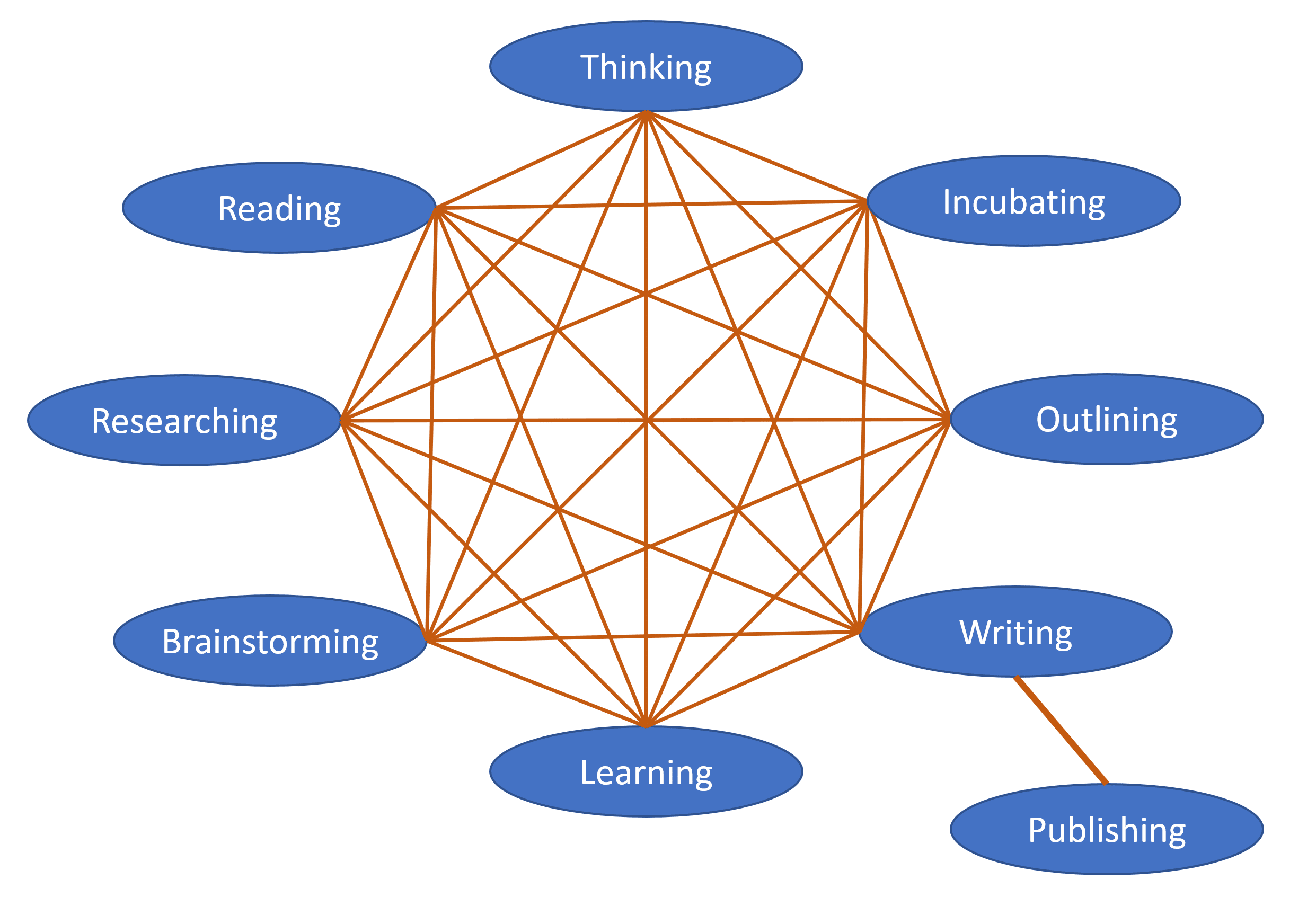
Step 1: Brainstorming
Brainstorming what you already know is a great place to start any kind of project, including writing. You will find that you can improve your brainstorming many times throughout your work as new things come to mind. Brainstorm what you don’t know as well as what you know.
Step 2: Researching and reading
You may have done some work already and have some research papers to hand. Or you might find that some areas need more research when you try to integrate them into your writing. Similarly, you may have read a lot, or you might have new things to read and digest.
Always read with a pen in your hand to write down ideas in your own words. Always try to connect them to what you already know.
Step 3: Thinking and incubating
As you research, read, and make notes, your thinking about the subject will develop. Sometimes this happens after incubating an idea for a while. We write about Graham Wallas’ four-stage creativity technique in an earlier blog post about how to generate ideas.
Step 4: Outlining
The outline affects and is affected by every part of the writing process. The only strictly sequential part is that you can’t publish until you have finished writing.
You can think of the outline as the scaffolding for your work. Everything important belongs in there somewhere. In physical terms, the outline is the picture of your reasoning. Seeing it written down helps you to think about gaps in the material, and how it flows from beginning to end.
Developing an outline for your document involves aiming at a target, drafting a summary, creating a sequence or story, and identifying the key points and arguments. This outline may change a lot as your ideas develop. You might need to gather more resources, re-think your arguments or do some more reading. Your priorities will change when you decide what is important enough to include in the outline, and what can be left out.
To begin with, write complete sentences for the section titles, summarizing the key point of each. If required, you can later change these to the short headings required for topic outlines. It will help your writing to flow if you have first summarized your thesis statement as a series of key points.
Step 5: Writing
Writing the text within the outline will also change your thinking. They say that teaching something is the best way to learn it. Trying to express ideas in your own words lets you see them afresh. Seeing them written down is very different from imagining them in your mind.
Step 6: Learning
All of this results in learning, which feeds back into all aspects of your work. As your understanding increases, you will be better able to build a series of arguments into an outline.
Learning by teaching
If writing is a tool for thinking and learning, then learning techniques can also help us with the writing process.
The renowned lecturer Richard Feynman had a simple process for learning almost anything. The Feynman Technique can be used as the basis for a writing process too. Descriptions of his technique vary, but the key stages are:
- Define the subject and write down what you already know. Also, write down what you don’t know, but will need to know.
- Prepare to teach it to a 12-year-old. This means keeping it short, keeping it simple, and avoiding jargon. It also means building on concepts that your reader will already know about.
- When you reach a gap in your knowledge, do more research and reading until you can close it.
- Review what you have learned and simplify it to make it easier to understand. Use stories and analogies to bring the subject to life.
You can see that this will involve many jumps around the above network. The emphasis here is on teaching as a way to learn things yourself. Your “teaching” notes are the essay or document that you want to write, and your “student” is the reader.
Outlining with Mindomo
If you search for outline software, many different types of tools are recommended – spell checkers, grammar checking, word processors, and more. Most of them do not help you to think. Ideally, you need a tool that will help you to collect, understand and organize information and ideas before you can create an outline and develop it.
Of course, you may have a limited time in which to deliver your written piece. Ideally, you should spend 50% of it on your research, developing ideas, and developing structure, and 50% on the actual writing. If you spend 100% of your time just writing, you may not have any time to go back and strengthen your ideas or fill in gaps in your knowledge.
Start with a Mind Map
Using a diagramming tool such as Mindomo to brainstorm, collect ideas, organize your research papers, link to resources, and track actions will bring your writing project together.
Collect all your research and notes under one main topic, leaving the rest of the map free for your writing outline. Ideas for creating an outline will begin to emerge but are just ideas at this stage.
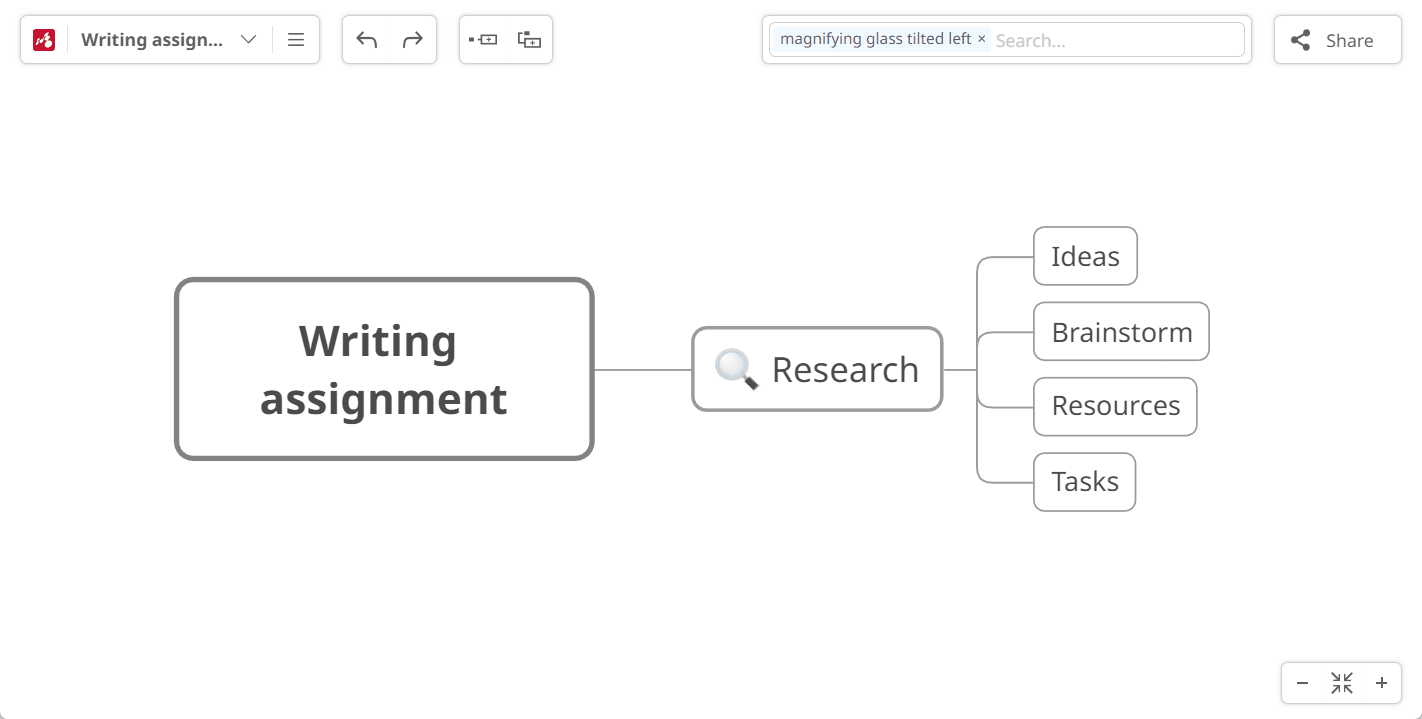
Design your outline
You can then start to design your outline in the rest of the space in the mind map. Develop the flow of main ideas and sub-points. To build the outline, you draw upon the ideas and information in the research area.
The outline is effectively your thesis statement, arranged in a sequence that has a beginning, a middle, and an end. You should be able to read the statements in the outline as a summary of your essay or argument.
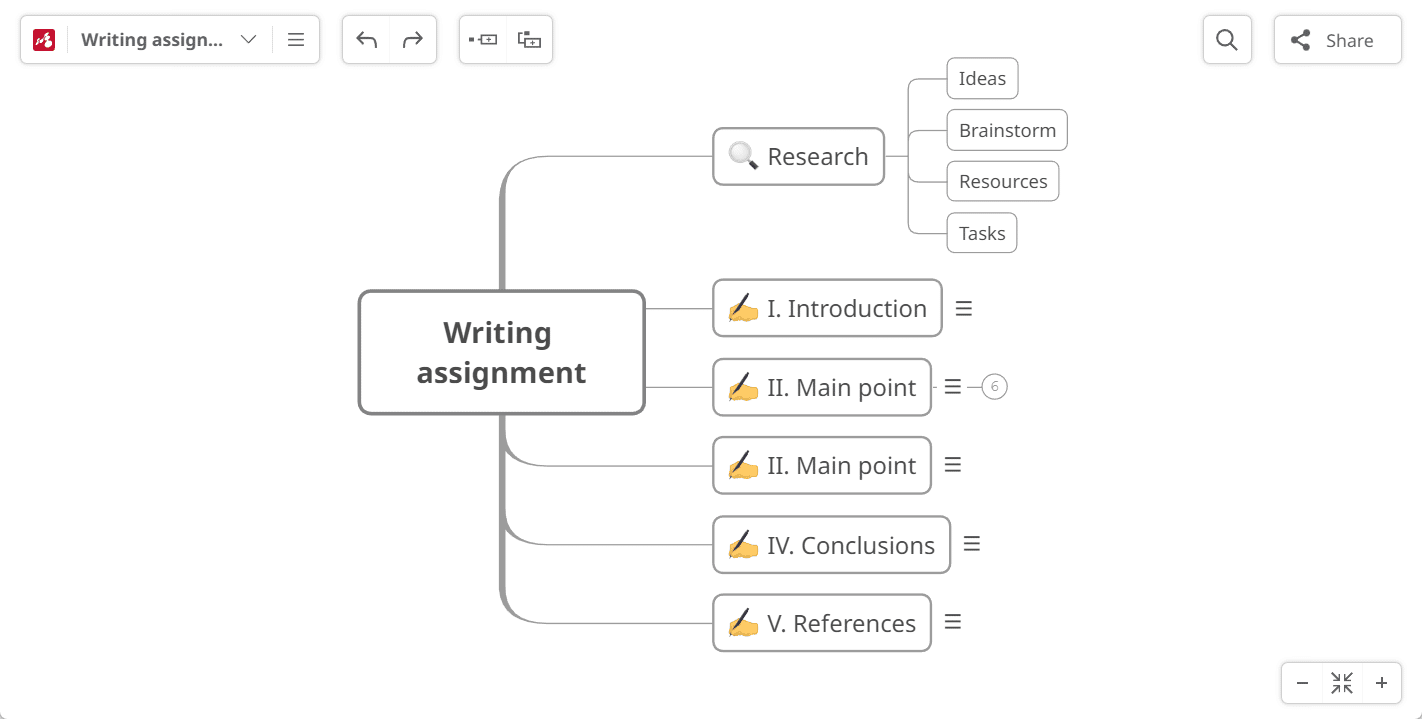
Switch to Outline mode for writing
Switch to Outline mode to finalize your outline and to write your text. In Outline mode, you can concentrate on linear structure and linear text. You can work in almost the same format as the reader will see your document. You can filter out the research topic if you prefer.
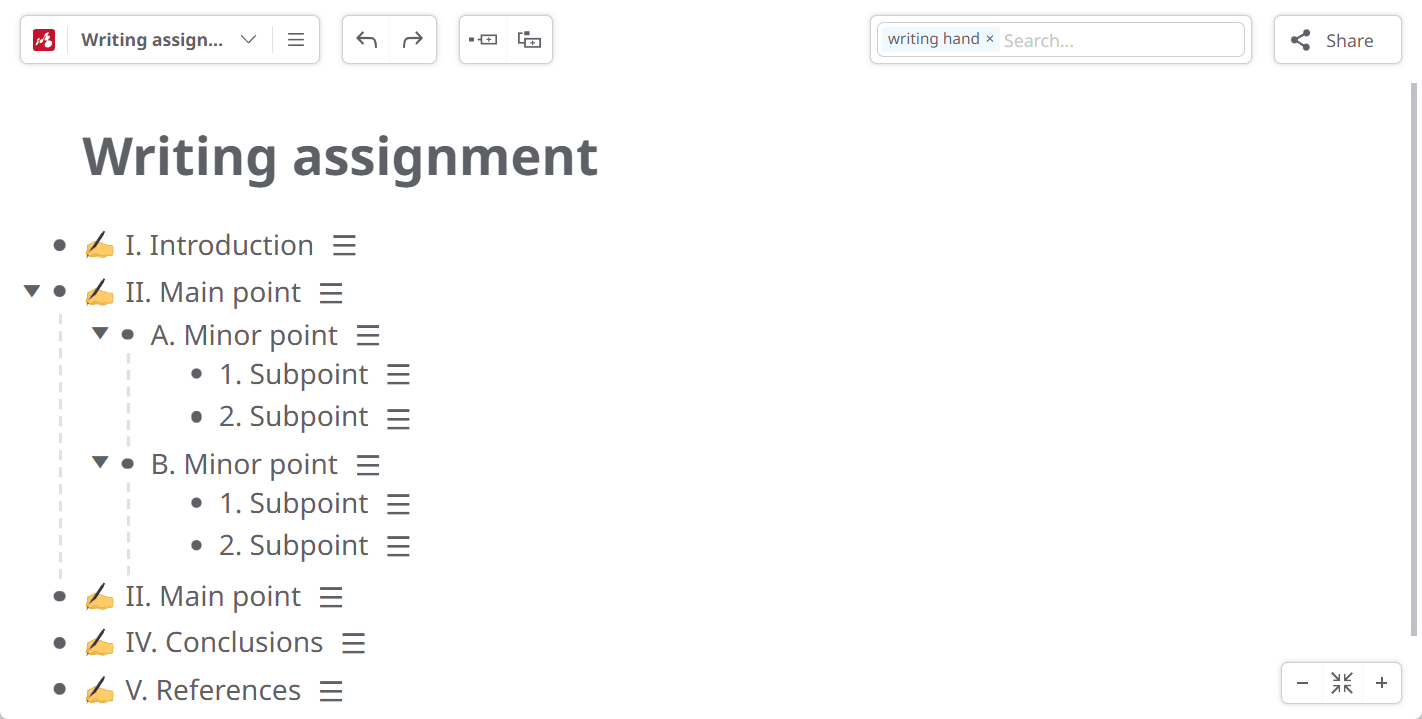
The title of your work is the central topic of the map, and the main topics are the top-level sections in your outline. The topic notes for each item in the outline are the paragraphs and sentences.
In outline mode, you switch from researching and organizing to finding the right words to convey your ideas. You may find yourself switching back to mind map mode frequently to add new ideas or re-think the structure again.
Publish by exporting
When you are ready to finally publish, filter out the research topic and export your outline to text or to a Microsoft Word document.
Here you can do your grammar and spelling checks. You can also add your numbering schemes such as Roman numerals, Arabic numerals, or bullet points. Special formatting such as page headers, footers, and references can easily be added to the word processor. This is all done when you have the right structure and words to describe it.
We will look in detail at Mindomo’s outlining features and some example outlines in the next article.
Keep it smart, simple, and creative!
Author: Nick Duffill

